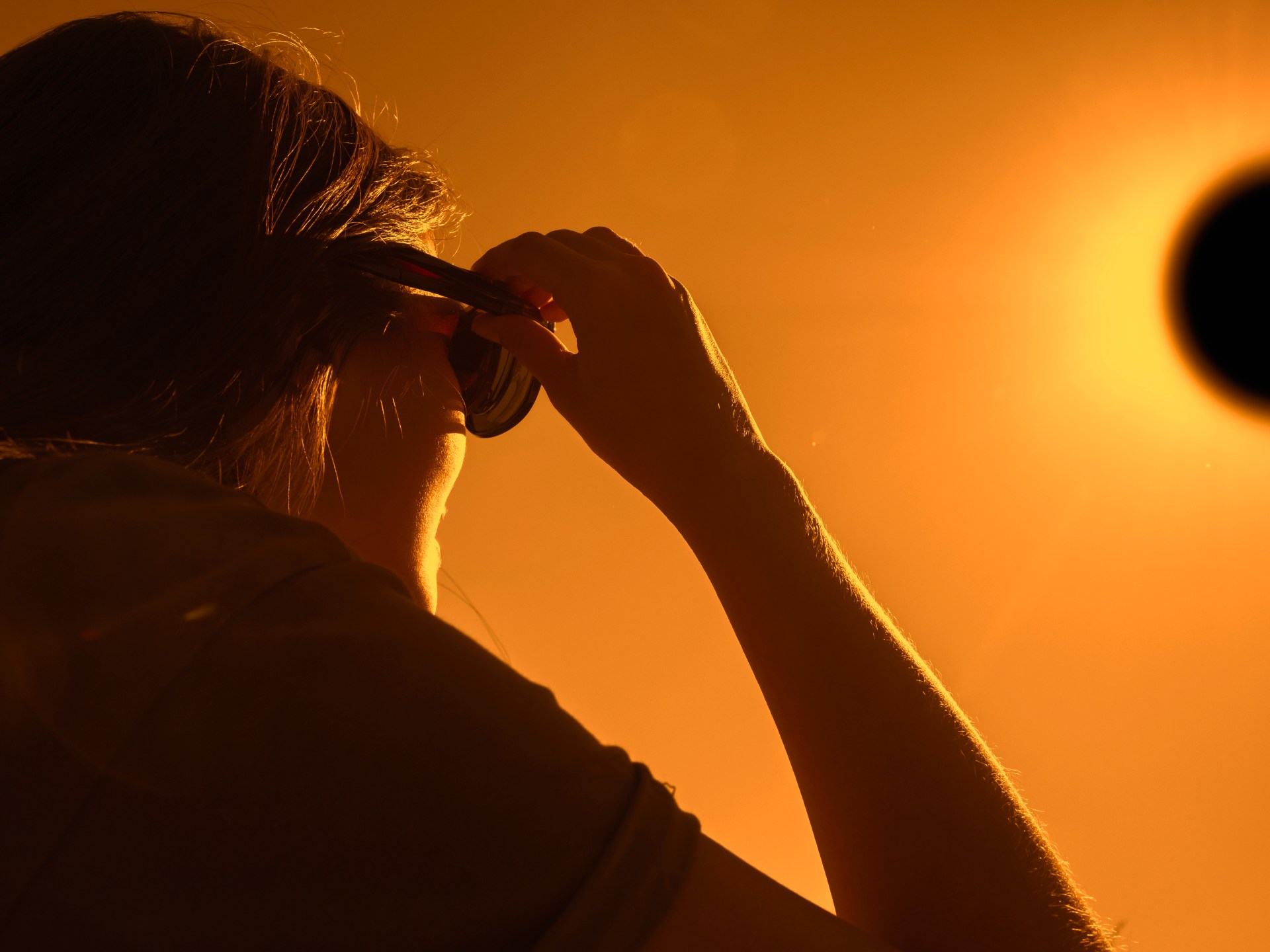Residents of the American continent are expected to observe a total and partial eclipse on April 4, and it will last for about two hours (Shutterstock)
The people of the Earth are anticipating a total solar eclipse on April 4 this year in the western regions of the world, such as Mexico, America, and Canada. What makes the event special is that the residents of those regions will not witness a similar eclipse for another 20 years.
During the next eclipse, which is only a few days away, the sun, the Earth, and the moon will line up in one line between them, so the moon will block the sun’s rays from the Earth, and part of the planet will enter into complete darkness for a period of time until the moon’s passage ends.
Astronomers exploit the phenomenon of blocking the bright rays of the sun to study some phenomena and characteristics related to the sun and its outer atmosphere, while some amateurs and astronomy enthusiasts seek to observe the eclipse and commemorate its occurrence by taking some pictures. On this occasion, NASA provided some important instructions that may make the experience better.
safety first
Looking directly at the sun poses a real danger to the eyes, and even to the camera lenses unless they are accompanied by special sun lenses. Therefore, it is important to wear special glasses called eclipse glasses, and also attach solar filters to the camera to protect the lens from damage.
After the moon completely obscures the sun, the filters must be removed from the camera to capture the solar corona - the outer layer of the sun's atmosphere - in a completely unfamiliar scene.
It is important to wear glasses designed to observe the eclipse in its various stages (Shutterstock)
All photographic equipment is sufficient
The quality of the image depends more on the photographer than on the camera itself, whether the camera is an advanced DLCR camera or a phone equipped with a zoom lens. If zoom lenses are not available, it is possible to focus on other natural scenes and the effect of the sudden absence of sunlight on them.
Some other useful equipment can also be used, such as using a tripod to stabilize the camera and avoid taking blurry photos when the lighting is low. It is also possible to use a shutter delay timer, which allows you to take photos without camera shake.
He looked in all directions
It is true that the sun is the main element in the eclipse, but what happens to the planet as a result of the eclipse is no less amazing than what is in the sky. The lack of light in broad daylight and the intensification of darkness will create a unique and distinctive atmosphere, causing astonishment to appear on the faces of the attendees, and even the plants and flowers will be in a state of astonishment as they are not accustomed to the atmosphere.
NASA photographer Bill Ingalls urges you to focus on the whole experience and observe the event from several angles. He says: The real pictures will be of the people around you pointing and staring at the eclipse and watching it, which reflects the distinct feelings in those moments.
The sun is surrounded by an atmosphere like the Earth, except that it is a very hot glow that appears clearly in the eclipse (Shutterstock)
Practice and practice
It is important to prepare well before the event, and this includes knowing the camera’s capabilities and adjusting its settings, especially with regard to the exposure settings, which are responsible for adjusting the lighting and filtering the light. It is important to handle the camera manually for quick intervention if necessary.
For DSLR cameras, it is recommended to use a fixed aperture from f/8 to f/16, while experimenting with shutter speeds between 1/1000 to 1/4 second to reach the optimal settings, which can then be used to take pictures during different stages. From the eclipse.
During a total eclipse, the sun's atmosphere will appear very bright, so it is best to use a fixed aperture and an exposure range ranging from approximately 1/1000 to one second.
Share with us
NASA invites you to share the special experience with friends and family, as well as share the content on social media platforms to reach as widely as possible.
Finally, while observing the eclipse and busy photographing it, we should not forget to watch it with our eyes for a few moments and see it away from any devices and equipment, and that is only when it is a total eclipse. However, before and after the total eclipse, we must adhere to wearing special glasses.
Source: Al Jazeera + websites

